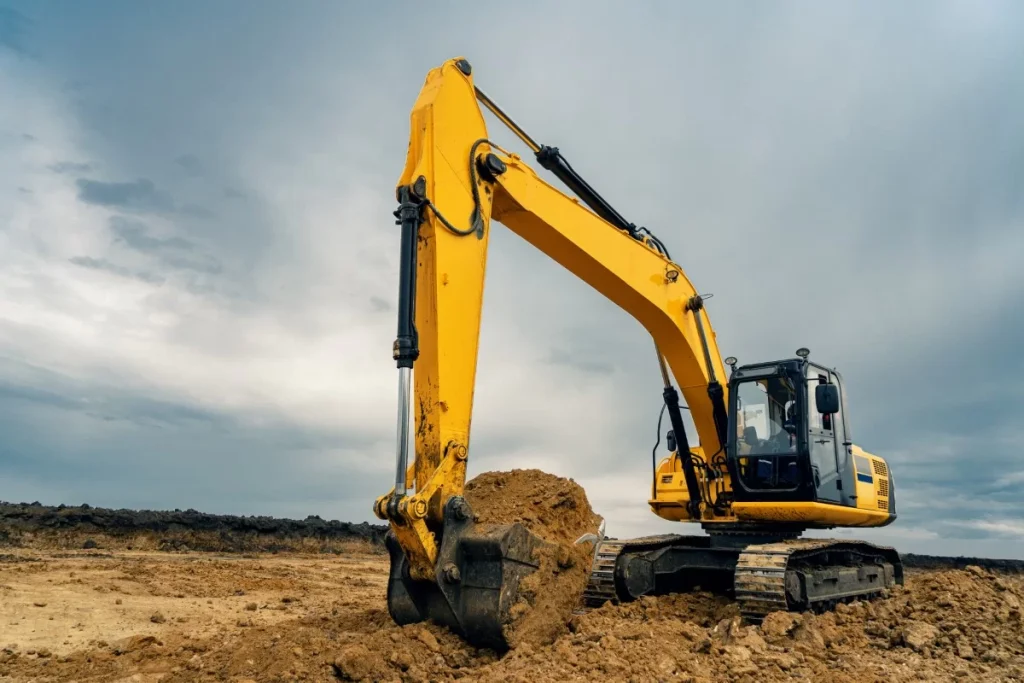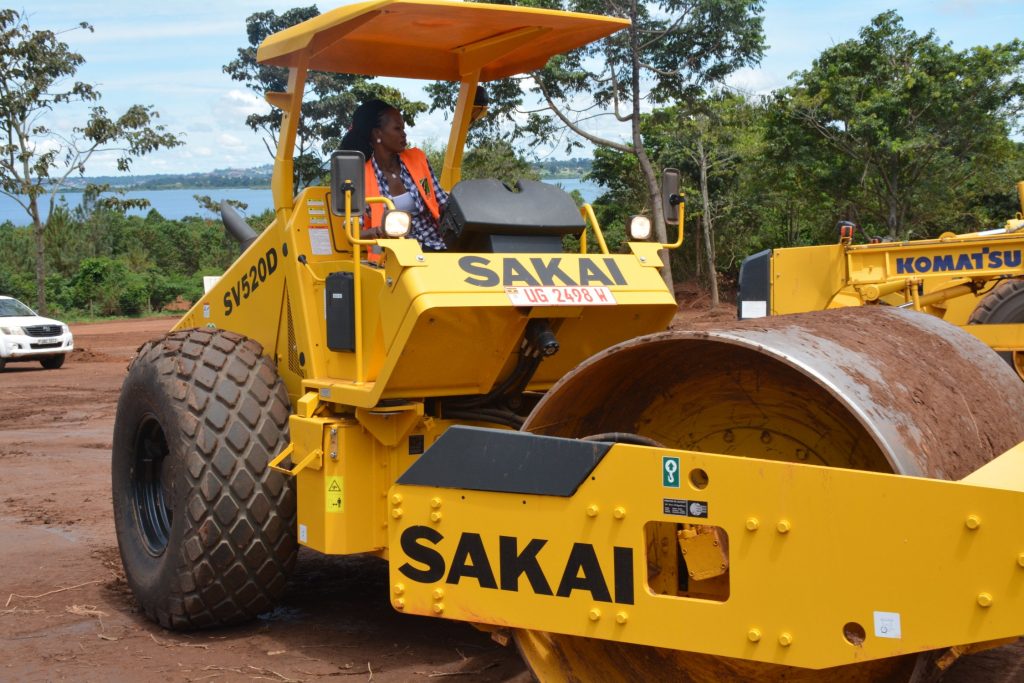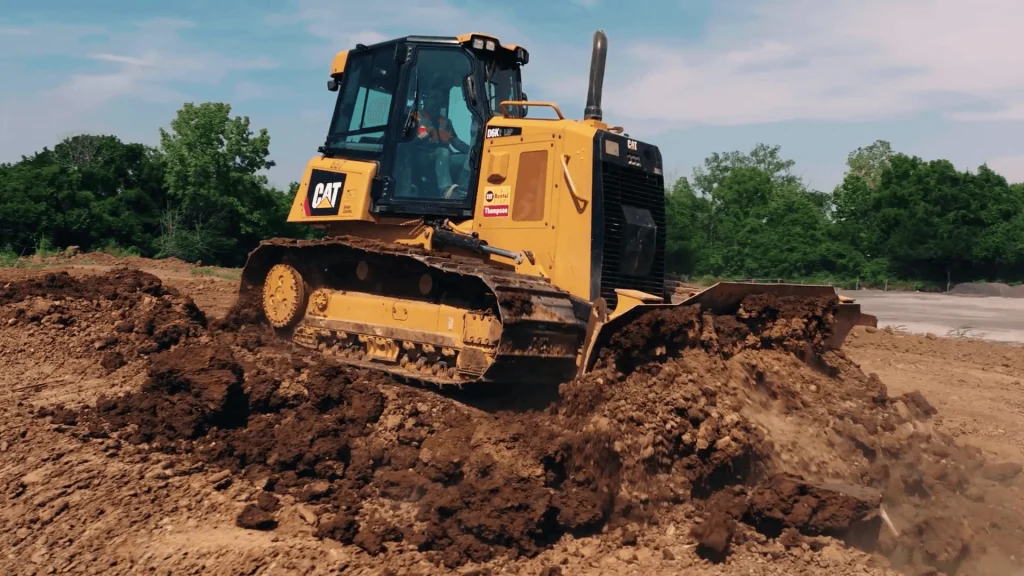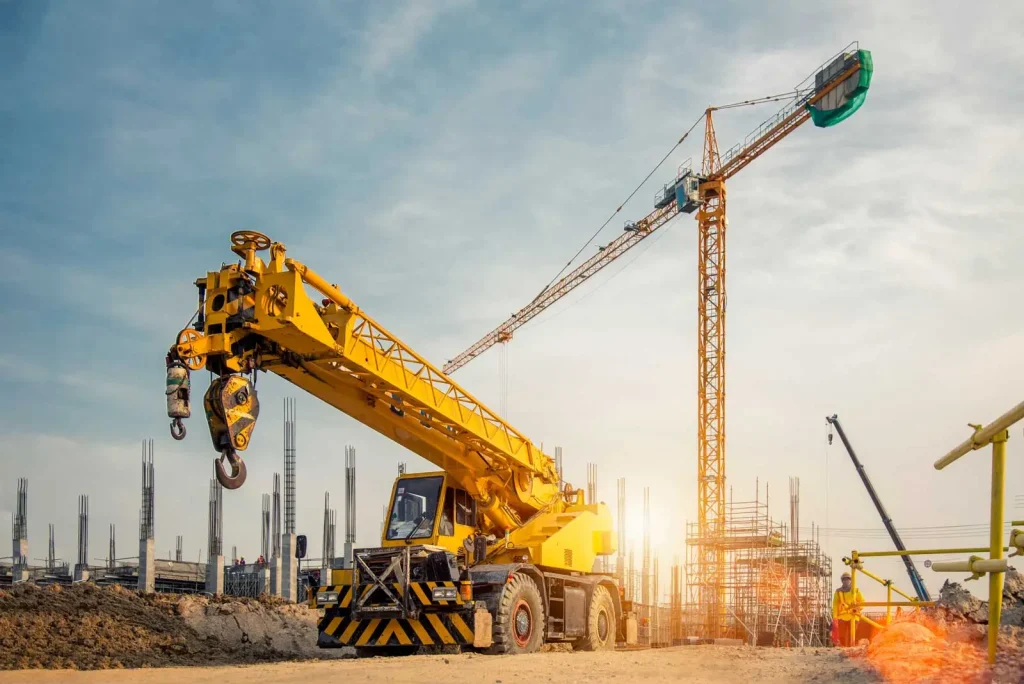- Tel:256772069909
- join@machinerytraininguganda.com
- Plot 463 Ave, Kamuli, Kampala

If you’ve been at any construction sites, road works, or large farms in Uganda, chances are you’ve seen massive machines moving dirt, clearing land, or lifting heavy materials. But have you ever wondered what the difference is between a TLB and an excavator? Many people confuse the two, and for good reason—they’re both powerful, rugged, and made for tough work. But once you look closely, you’ll see they serve different purposes and operate very differently.
At Machinery Training Uganda, we offer hands-on training for both machines and more. But we believe the first step to success is understanding what you’re working with.
So if you’re planning to become a heavy machinery operator in Uganda, or you’re simply curious which path to take, let’s walk you through everything you need to know about the differences between TLBs (Tractor Loader Backhoe) and excavators.
TLB stands for Tractor-Loader-Backhoe. To better understand it, think of it as a triple-purpose machine: it has a front loader bucket for scooping or lifting materials like sand or gravel, and a rear backhoe arm for digging trenches or holes. The “tractor” part is the vehicle base that powers both the loader and backhoe.
The TLB is often seen in many road construction, small-scale building sites, farms, and even local government maintenance projects. It’s built for flexibility—allowing you to switch between tasks without changing machines. The operator can simply rotate the seat from the front controls to the backhoe levers and continue working.
An excavator is a purpose-built digging powerhouse. Sitting on a rotating platform called the “house,” it swings a full 360 degrees, so the operator can dig, lift, and dump without ever repositioning the machine. A long boom and stick reach out like an arm, ending in a sturdy bucket that tears into soil or rubble with ease.
Because of that reach and rotation, excavators excel at jobs that demand depth or precision—cutting deep trenches, carving building foundations, tackling demolition, scooping out mining pits, and handling heavy earthmoving on crowded sites. You’ll see them in all sizes, from compact minis that slip down city streets to massive rigs shaping highways and dams. Most ride on tracks for extra stability, though wheeled versions exist for quick moves on firm ground.
Size and Strength
Excavators are usually larger and more powerful than TLBs. They’re built for heavy-duty tasks and perform well on tough ground or rocky sites. TLBs are medium-sized and better suited for jobs that require a balance of power and mobility.
Rotation Capabilities
One of the biggest differences is how the machine moves while working. Excavators rotate a full 360 degrees. That means the operator can dig, swing, and dump material all from one position. This is a huge time-saver in confined job sites like building foundations or mining pits.
TLBs don’t have this kind of rotation. The backhoe arm can swing about 200 degrees, so if you need to move soil from one side to another, you’ll often have to reposition the whole machine. It’s still flexible but not as fast or efficient in tight spots.
Digging Depth and Reach
Excavators have a longer reach and can dig deeper holes or trenches than TLBs. That makes them perfect for sewer line installations, foundation trenches, and projects that go below surface level. If your job requires serious digging depth, an excavator is the way to go.
TLBs, while capable, have more limited reach. They’re perfect for shallow to medium-depth digging, which is often enough for rural water lines, utility trenches, and light construction.
Mobility and Transport
One of the reasons TLBs are so popular in Uganda is that they can drive on public roads. That means you can move them from one job site to another without needing a trailer or transport truck. This saves time and reduces logistics costs.
Excavators—especially the ones on tracks—aren’t road legal. You’ll need to use a low-bed trailer to transport them between job sites. This adds to the overall cost and makes planning more important.
Versatility in Function
The TLB is the multitool of the machinery world. You can dig, scoop, lift, and load—all with one machine. It can even be fitted with attachments like ploughs, sweepers, and forks to expand its usefulness. This makes it a great option for operators who want to learn a little of everything.
Excavators are more focused. Their main job is digging and earthmoving. While they also have attachments like breakers, grapples, or augers, they’re not meant to be used for loading or road work. They excel at doing one thing—digging—and doing it very well.
Ease of Use for Beginners
For new operators, both machines can be mastered with good training. However, many beginners find the TLB easier to understand because its functions are more straightforward and the controls are less sensitive. Excavators, especially large ones, require more finesse and timing because of the full rotation and hydraulic arm length.
At Machinery Training Uganda, we take time to train every student patiently, whether you’ve never touched a machine before or already know a little. We offer instruction in English, Swahili, and Luganda so that language is never a barrier.




Cost and Maintenance
TLBs are generally more affordable to buy and maintain. They use one engine for both front and rear tools, which makes servicing them cheaper and simpler. They also consume less fuel compared to larger excavators.
Excavators cost more upfront and require regular maintenance on hydraulic systems, tracks, and swing components. These machines are built for big tasks, and that power comes with a higher price tag.
Career Opportunities in Uganda
If you’re in Uganda and considering forklift or heavy machinery training, think about the kind of jobs you’re aiming for.
TLB operators are in demand across road construction companies, local governments, farms, and building contractors. You’ll often find jobs that involve multiple tasks on one site—grading roads, digging ditches, and loading soil.
Excavator operators are usually needed on bigger projects—like highways, dams, mining sites, and large construction jobs in cities like Kampala, Gulu, and Jinja. The pay may be higher, but you might also work in more remote areas or on strict schedules.
If you’re new and looking for quick employment, learning how to operate a TLB is a great start. It’s versatile, mobile, and widely used. It gives you flexibility in your job search, especially in rural and peri-urban Uganda.
If you’re aiming to specialize and work in large construction or infrastructure projects, then excavator training will give you a competitive edge. You’ll be able to handle serious jobs, dig deeper, and operate in complex job sites.
At Machinery Training Uganda, you can train on both machines. We’ll guide you depending on your career goals, where you live, and the kind of jobs you’re targeting. We also help you build a complete operator profile—machine skills, safety training, and job readiness.
We’re not just a training center—we’re a launchpad.
We believe in giving real skills to real people who want a better future. Whether you’re a school leaver, a college graduate, or someone switching careers, we’re here to help you succeed.
Do I need a driving permit to join the course?
No. You don’t need a driving license to start. We train you from scratch—even if you’ve never driven anything before.
How long is the course for each machine?
Training usually takes 1 to 2 weeks depending on your learning pace. We focus on hands-on training every day.
Can I train on both machines?
Yes. Many students choose to train on both TLB and excavator to increase their job chances. We can offer combo packages.
What documents do I need to enroll?
Just your National ID or passport and two passport photos. We handle the rest.
I’m coming from another district. Can I stay at the school?
Absolutely. We provide clean accommodation and meals at little cost to cater for people like you.
Will I get a certificate?
Yes. Irrespective of the machine you choose, upon completion of the course and pass the assessment, you’ll receive a recognized certificate showing your skills.
Do you help with job placement?
We connect you to companies in construction, roadwork, and logistics who are hiring trained operators.
I’m not fluent in English. Can I still join?
Yes. We offer training in Swahili and Luganda for those not comfortable in English. You’ll still get the full experience.
Choosing between a TLB and an excavator is more than just picking a machine—it’s choosing a career path. Both have their strengths, both have great opportunities, and both are valuable skills in Uganda’s growing construction and logistics industry.
At Machinery Training Uganda, we’ll not only train you—we’ll prepare you for work, connect you to jobs, and support your journey every step of the way. Whether you start with a TLB or an excavator, you’re making a smart move toward a better future.
So, which machine is calling your name?



Join us to start a transformational journey to unlock limitless doors of heavy machinery opportunities.
Machinery Training Uganda is a reputable and leading Heavy Machinery Training Centre offering affordable training courses in Trailer, Excavator, grader, forklift, sino trucks and more.
+256 749 762 961
+256 772 069 909
machineryuganda@gmail.com
Kamuli , Kampala
Copyright Machinery Training Uganda © 2025 All Rights Reserved